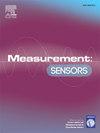Advanced measuring techniques for tidal turbine blades during structural testing
Q4 Engineering
引用次数: 0
Abstract
Tidal energy is one of the most predictable and reliable renewable energy sources, capable of generating significant amounts of electricity in the coming decades. Scientists, researchers, and technology developers are working tirelessly to propel the industry forward, employing next-generation innovative design strategies to achieve future milestones in affordable and sustainable power generation. In this context, the validation of novel tidal turbine systems offers significant advantages to developers, enabling them to deploy the devices at various tidal potential sites worldwide with confidence that their designs will be able to withstand loading conditions during operation. A method used to help achieve this is to conduct a structural testing program of their tidal turbine blades, in accordance with DNV-ST-0164 and IEC DTS 62600-3 standards. Within this scope, developers are demanding accelerated, efficient, and reliable testing programs to de-risk innovative designs while traditional instrumentation methods have considerable disadvantages. Therefore, this study addresses these challenges by investigating the use of modern advanced measurement tools and offering recommendations to enhance the structural testing process of tidal turbine blades, aiming to improve testing effectiveness and deliver high-quality results within a shorter time frame. Within this study, laser scanning vibrometer, digital image correlation systems, infrared thermal imaging camera, fibre Bragg grating sensors, and laser displacement measuring sensors were employed, in parallel with the traditionally used sensors, to assess the structural testing program of a helical shape tidal turbine foil and studied the results. This study yields promising outcomes, highlighting the potential use of advanced measurement techniques to enhance the structural testing paradigm for tidal turbine blades for future accelerated testing programs. More importantly, it supports the developers in de-risking their technologies, while establishing a new knowledge base for the effective use of modern measurement tools, ultimately contributing to the reduction of the levelised cost of tidal stream energy devices.
潮汐能涡轮机叶片结构试验中的先进测量技术
潮汐能是最可预测和最可靠的可再生能源之一,能够在未来几十年产生大量的电力。科学家、研究人员和技术开发人员正在不知疲倦地推动行业向前发展,采用下一代创新设计策略,以实现经济实惠和可持续发电的未来里程碑。在这种情况下,新型潮汐涡轮机系统的验证为开发商提供了显着的优势,使他们能够在世界各地的各种潮汐潜在地点部署设备,并确信他们的设计能够承受运行期间的负载条件。一种帮助实现这一目标的方法是根据DNV-ST-0164和IEC DTS 62600-3标准对其潮汐涡轮机叶片进行结构测试程序。在这个范围内,开发人员要求加速、高效和可靠的测试程序来降低创新设计的风险,而传统的仪器方法有相当大的缺点。因此,本研究通过研究现代先进测量工具的使用,并提出建议,以提高潮汐涡轮机叶片结构测试过程,旨在提高测试效率,并在更短的时间内提供高质量的结果,从而解决这些挑战。本研究采用激光扫描测振仪、数字图像相关系统、红外热像仪、光纤光栅传感器、激光位移测量传感器,与传统传感器并行,对螺旋形潮汐涡轮翼的结构测试方案进行了评估,并对结果进行了研究。这项研究产生了有希望的结果,突出了先进测量技术的潜在应用,以增强潮汐涡轮机叶片的结构测试范式,以用于未来的加速测试计划。更重要的是,它支持开发人员降低技术风险,同时为有效使用现代测量工具建立新的知识库,最终有助于降低潮汐流能源设备的平化成本。
本文章由计算机程序翻译,如有差异,请以英文原文为准。
求助全文
约1分钟内获得全文
求助全文
来源期刊

Measurement Sensors
Engineering-Industrial and Manufacturing Engineering
CiteScore
3.10
自引率
0.00%
发文量
184
审稿时长
56 days
 求助内容:
求助内容: 应助结果提醒方式:
应助结果提醒方式:


